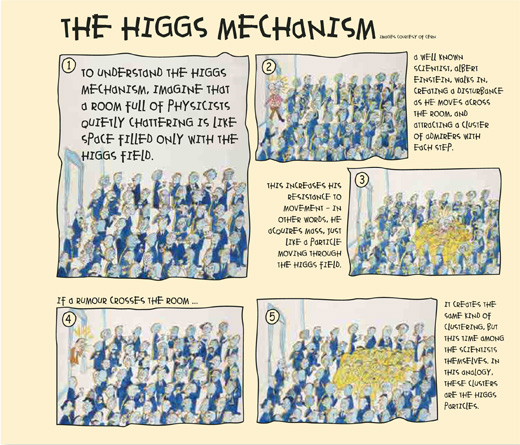Is there an accepted analogy/conceptual aid for the Higgs field?
This is not as easy as it may sound: in every analogy one has to make a choice between rigor and 'poetic license'.
Personally, the one i like better is Higgs for Waldegrave: where a crowd-analogy is given. But, as they say, your milage may very.
If you'd like, you can think in terms of a 'caramel pool', Milky Way Simply Caramel: Pool : when we say that a particle 'couples' to the Higgs field, we mean to say that this particle 'sees' this 'caramel pool', and this makes it "harder" for it to move, which we measure as this particle's "mass". And, as you can imagine, there are particles that do not couple to the Higgs field, meaning to say they do not "see" it: therefore, they move much more easily. ;-)
But, take all this with a grain of salt…
This is my favourite simplified picture explaining the higgs mechanism:

In the first tree panels You can see how Einstein (a massless particle) enters a room with physicists (the higgs field) and gets slowed down by his colleagues wanting to talk to him (he couples to the higgs field and attains mass).
Panels 4 and 5 explain how the higgs field itself attains mass by coupling to itself: If a rumor propagates through the room, the physicists (higgs field) form a local crowd intensively chatting (self coupling).
The Higgs mechanism is itself an extension to nonabelian gauge theory of an everyday tabletop phenomenon (at least in laboratories), called superconductivity. The origin of superconductivity is the formation of a charged Bose-Einstein condensate of electron pairs, which means that magnetic fields in the material are excluded. The exponential decay of electromagnetic fields means that the U(1) photon of EM at low-energies has become massive, and the reason is that the condensate has been eaten to supply the missing polarization state for the photon.
All this is explained in the Wikipedia page on Higgs mechanism. The original papers of Higgs, Brout Englert, and Guralnik Hagen Kibble, were all motivated by the suggestion by Nambu that the vaccuum can contain paired fermion condensates, just like the Bardeen-Cooper-Schriefer model of superconductivity. Nambu actively studied the BCS model before discovering the chiral quark condensate.